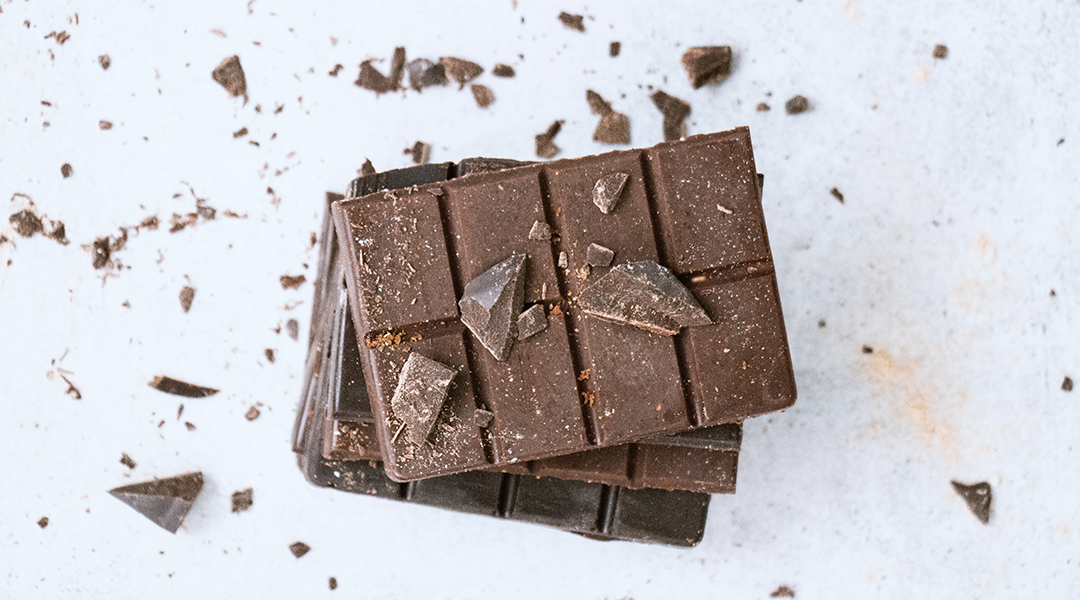When it comes to food, everybody’s taste is different, but in addition to flavor, a food’s texture plays an important role in our enjoyment of it. In this context, a group of scientists decided to explore how molecular-scale structures of edible materials affect their “mouthfeel” — in particular, an old favorite: chocolate.
“We chose to work with chocolate not only for a personal taste but for a scientific reason,” said Corentin Coulais, associate professor at the University of Amsterdam and leader of the study. “Chocolate is conceptually ‘simple’ from a physics viewpoint because it’s a brittle material. When studying fracture — which is the underlying topic of our work — brittle materials are easier to understand. Fracture is easier to control in brittle materials compared to ductile materials.”
Metamaterials, which contain artificial structures that cannot be found in nature, have advanced technologies in optics, communications, and more as they possess unique and adjustable mechanical properties. However, until now, their application in the culinary arts has been unappreciated.
“The fact that metamaterials allow you to control the behavior of the material — how strong it is, how it breaks — does have an effect on what we experience when we bite,” said Coulais.
Coulais and collaborators sought to explore how mouthfeel could be influenced by manipulating the architecture of chocolate metamaterials.
Finding the right recipe for chocolate metamaterials
Working with chocolate in a 3D printer was not a simple task. According to the study, there are six different crystal forms of chocolate, each with their own mechanical properties and melting points. The scientists therefore had to find the perfect chocolate candidate and conditions to make it malleable enough to behave as a suitable “ink”.
A 72% dark chocolate yielded the best results as its high cacao purity gave consistent melting and solidification temperatures. Once the “recipe” to the build chocolate structures was in place, the physicists printed S-shaped mechanical metamaterials in order to study its different fracture behaviors.
The team analyzed the chocolate’s mechanical properties using a specialized compression device and found that breaking it in the vertical direction required lower fracture force than when compressing it in the horizontal direction.
Later, to assess the chocolate’s sensory appeal, ten participants were asked to taste the chocolate structures and rate their mouthfeel experience. To do this as scientifically as possible, participants were provided with instructions on how to bite the different pieces of chocolate using their molars in both vertical and horizontal directions, as well as how to close their jaws at a deliberately slow pace in an effort to match the conditions of the sensory study to those of the mechanical tests.
“We found an interesting correlation: the more cracks, the better experience,” noted Coulais. “We can’t explain the physiological or psychological mechanism under that correlation but what we can do at our level is to design the relation between the object geometry and how it breaks.”
As an additional result, the team found that according to the participants evaluation, the sound the chocolate metamaterials make when bitten into has an affect on the mouthfeel experience.
“To make the results even more remarkable, it will be interesting to include the participation of social and food scientists to arrive to better conclusions,” Coulais added. “We’ve made the first step, but future studies will provide a much more systematic explanation.”
Metamaterials for tastier foods
Coulais thinks this research may have a huge impact in the food industry. “There’s active research in high tech for light-weight components, such as the aerospace industry, but it was surprising for us that no active research has been done related to food,” said Coulais. “It’s clear that metamaterials can assist in high tech development, but also it’ll be helpful to apply their use in low tech industries.
“From a food design viewpoint, it is perhaps more efficient and cost-effective if you can predict the mouthfeel based on a mechanical response rather than just going through a tasting panel,” he added.
Edible metamaterials may also have an impact in niche markets. For example, easy-to-bite products for children, plant-based foods could be designed to give a similar mouthfeel to meat, or dry food could be designed with specific structures that makes them feel like fresh products.
“The control of how materials break is a fairly new subject in translational science, even beyond food,” said Coulais. “People usually try to delay or avoid fracture, but in some cases it’s useful to embrace it and try to use it to absorb as much energy as you can — like in cars, aerospace, protective equipment.”
It’s certain that more work has to be done before exploiting food-based metamaterials’ full potential, but the team feels they are moving into interesting territory.
“Our work opens the door to new approaches for rational design of human-matter interactions and of fracture properties by using optimization methods for fracture, for edible products, but also engineering structures and beyond,” wrote the team in their paper.
Reference: André Souto, et al., Edible mechanical metamaterials with designed fracture for mouthfeel control, Soft Matter (2022). DOI: 10.1039/d1sm01761f
Feature image credit: Tetiana Bykovets on Unsplash

















